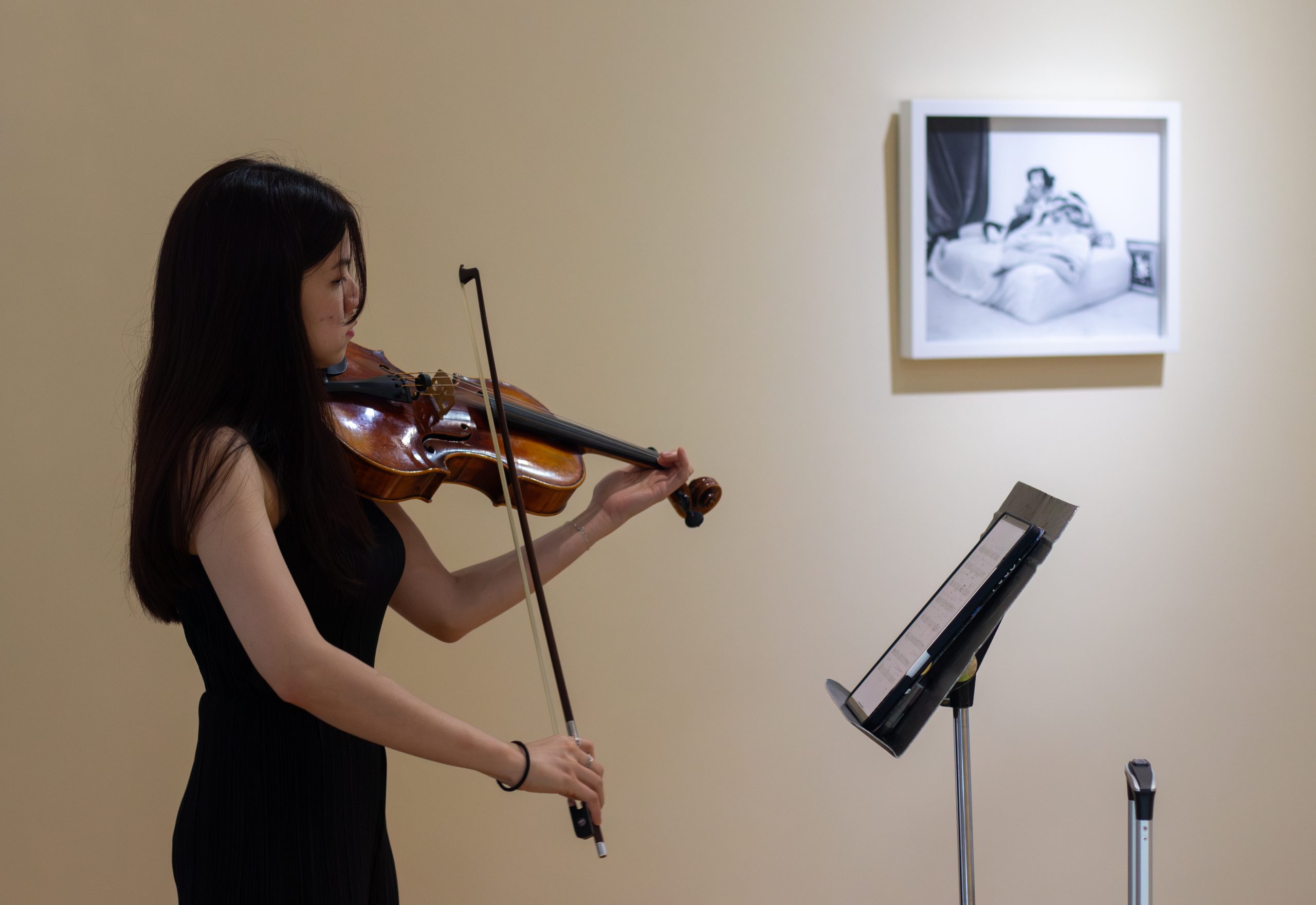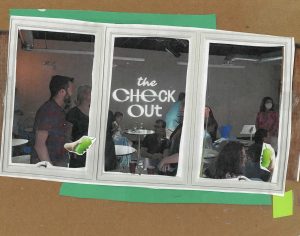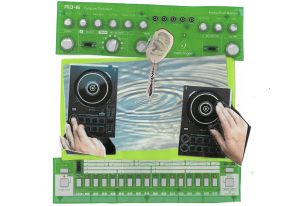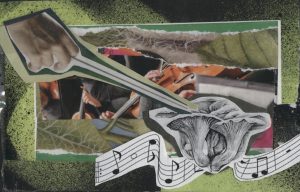
On a Friday evening in May, Yashi Davalos and Alberto Racanati opened dialogues about the preservation and loss of migrant identities and migratory patterns within the Midwestern landscape through sight and sound. In Absentia is a concert based on the original compositions from Alberto Racanati, presented in collaboration with the UMKC Music Conservatory Sight X Sound Series, as a part of Geometrica Pop y Rucas, an exhibition at Charlotte Street Foundation curated by Yashi Davalos.
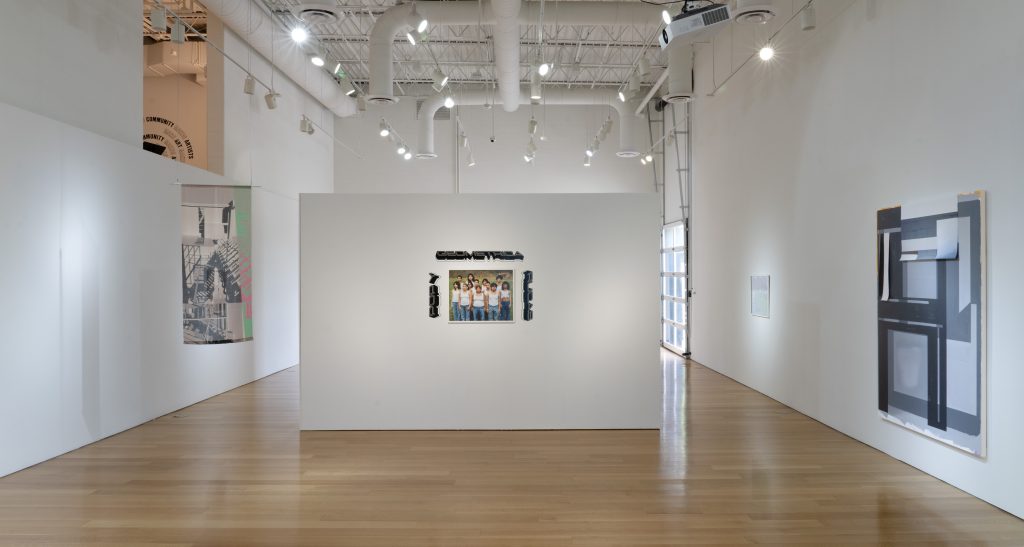
Through Davolos’s curation, Geometrica Pop y Rucas draws parallels between the cultural and architectural structures of generational Latine and Midwestern identities. As a performance within the context of the exhibition, In Absentia further establishes itself in this already complex social narrative, telling a story of all that is lost to emigration. The exhibition and performance shared a similar three-act structure. Conceptually, Davalos and Racanati tell parallel stories drawn from their individual pasts in their first collaboration, one unfolding in space and the other unfurling in time.
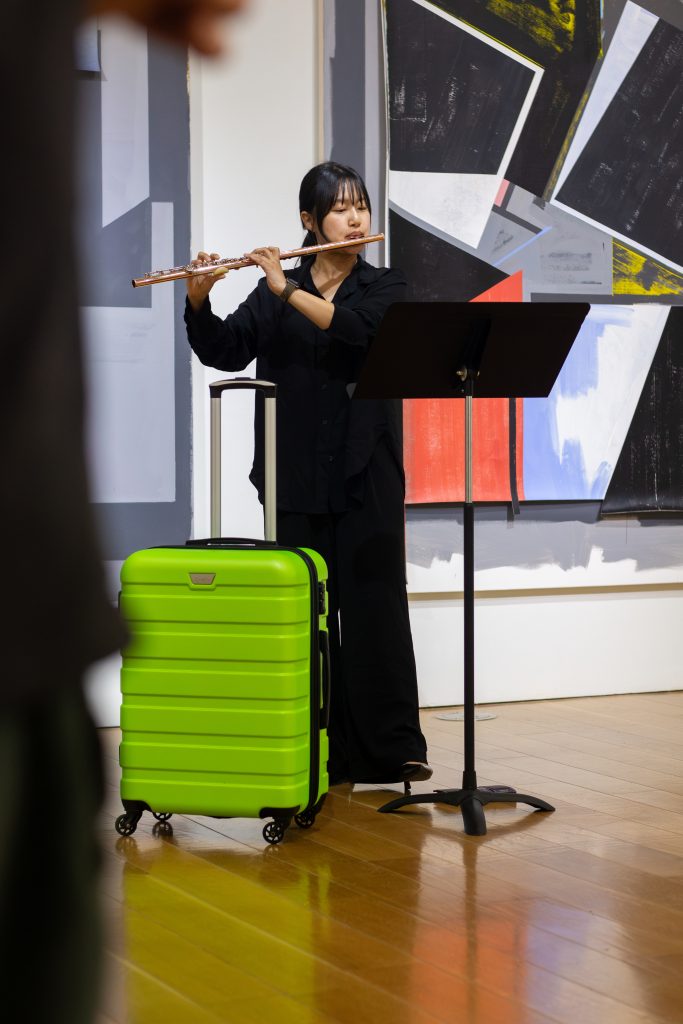
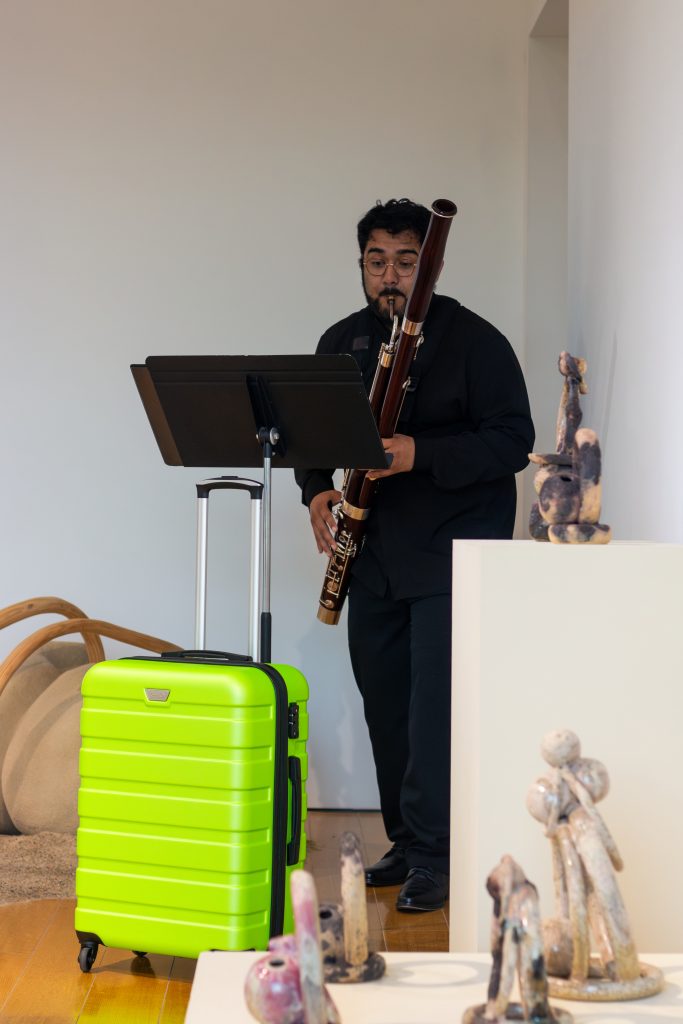
As the performance begins, three musicians—a bassoonist, a violist, and a flutist—trail into the gallery with a single suitcase in tow, while the fourth—a mezzo-soprano voice—lingers behind. The suitcase draws a metaphor that transforms the gallery space into a Midwestern passageway. It also serves as a visual signifier and guide for the audience to track as the musician’s migratory paths progress.
Each instrumentalist stations themselves at a different curatorial theme of the exhibition. To begin, bassoonist Carlos Pacheco leads the crowd to the back of the gallery with the suitcase for the first act. This section of the exhibition is titled “A futurism with land and body hybrids.” As Pacheco plays, the bassoon’s timbre is low, hesitant, and textured. Racanati’s instrumentation solidifies into a sonic echo of the adjacent ceramics by artist Ariadna Ginez, which possess a nearly volcanic quality. The circularity of Ginez’s forms gestures toward the cyclical patterns of holding that emerge throughout Racanati’s compositions.
“The suitcase draws a metaphor that transforms the gallery space into a Midwestern passageway.”
The audience is held and released in repetition throughout the bassoon’s solo. The instrument’s power and resonance appeal to the grittiness of Blas Isasi’s desert sculptures nearby. Isasi sculpts from islands of sand to build structures of feeling, imbuing speculative hope into the barren Peruvian landscape. The first act is constructed from a repeated series of downwardly pitched musical phrases that gradually increase the gravity of the room. In Pacheco’s time, the space becomes flooded with memories long lost. As the bassoonist’s solo finds its resolution, the suitcase is passed to the next performer while the bassoonist ambulates the gallery.
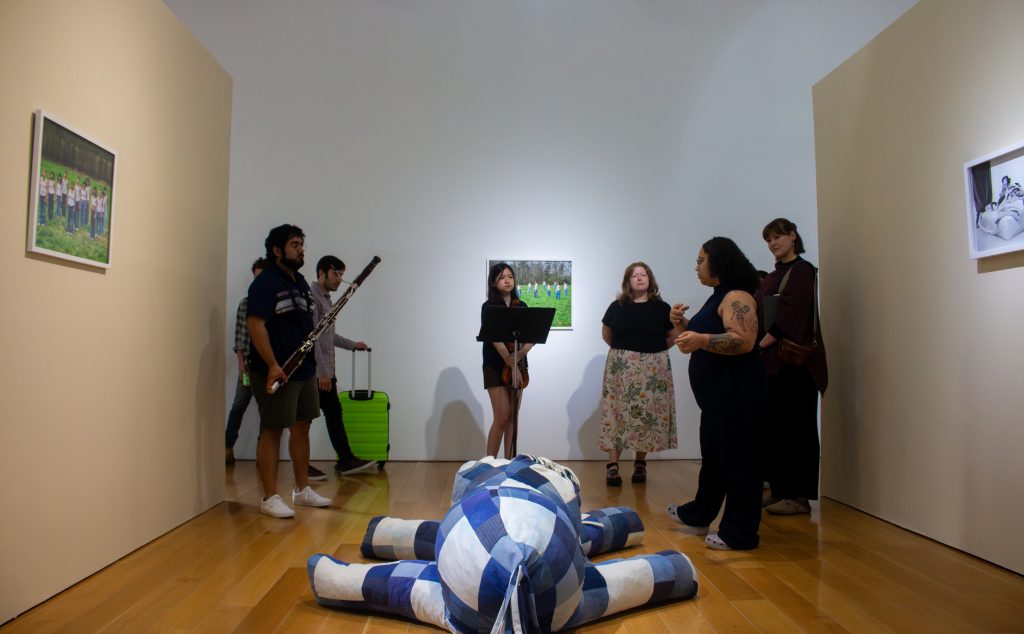
Wan Loo Soo begins the second act on her viola in the exhibition’s midsection, which Davalos titled “A destigmatized body.” Dueling melodies are pulled from a single bow to form suspensions of sound that meet the hanging gazes in Evie Lozano and Brayan Enriquez’s photographs. Based in Atlanta, Georgia, Lozano wields the camera to amplify the voices of Brown, Black, and Queer identities. Lozano and Enriquez’s group portraits destigmatize bodies through unity in formation and uniformity in presentation. This portion of the exhibition resonates the strongest with Racanati’s concept behind the entire composition. In Absentia, Latin for “in the absence of,” centers cultural loss that is derived from emigration. Heritages are slowly stripped away through processes of assimilation to form a deeper longing for that which is no longer. The viola’s composition grieves for a lost past that is echoed in the stories of immigration told through Brayan Enriquez’s images.
Enriquez photographs his relatives, telling familial histories through slices of life shown through turned backs and unmet eyes. Soo carves valleys of sounds through the plucks and bows of her viola as unreciprocated sightlines reverberate throughout the room. The apprehension of the plucked strings meets the certainty of the bowed notes to coalesce at the center of the room around a large soft sculpture slumped to the ground. Gabriella Poulos’s denim horse is an ode to the tired and the working. Through quilting processes and the use of reclaimed fabrics, Poulos connects her practice to the history of necessary making.
When the viola concludes, the suitcase is passed to flutist Kyoungseon Lim at the mouth of the exhibition. She begins to spin harmonies that twist upward like the path of a sparrow’s flight. The warbling murmuration of Lim’s flute is reminiscent of the sounds of industry. It hovers above the speculative bridge between the studios of Frida Kahlo and Diego Rivera, created by artist Jaasiel Duarte-Terrazas. These modernist stitched renderings form a dialogue between Latine structuralism and modern brutalism.
Hanging across the room is Blas Isasi’s sculptural print, which visually resembles the lilting notes. Rendered in vivid colors, the print sits boldly on a sheer mesh terrain that is suspended by a curved wooden armature. Racanati’s composition is reflected in the meandering trails of acrylic that mimic interwoven routes of commute. The flute’s rising intonations bring the audience upward into a bird’s eye view, a vantage point that is reflected in Caleb Taylor’s geometric constructs. Taylor’s abstractions collapse Midwestern architecture into its flattened footprint, his silhouettes slipping between the figure and ground. Davalos curated this section of the exhibition, titled “Infrastructure in Pantomime,” as an homage to urban choreography and the city grid. Racanati’s composition in the third act evokes the whimsy of childhood play and the optimism of a bygone past.
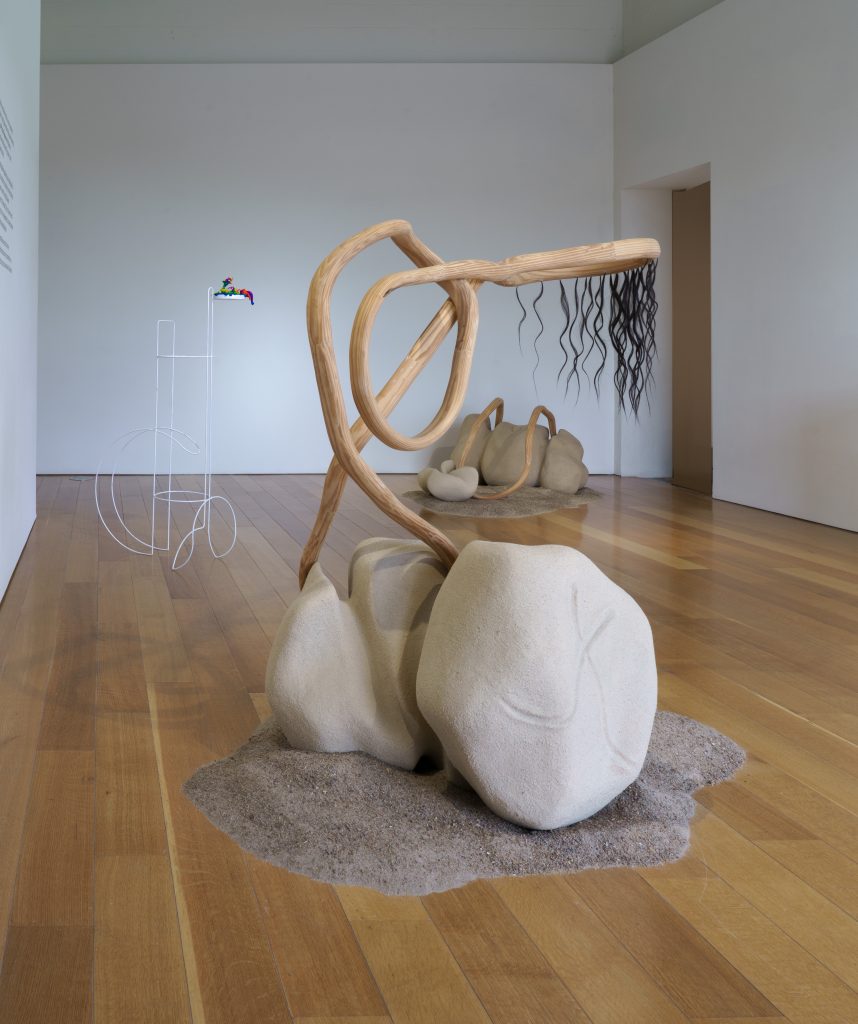
As the flute subsides, the suitcase is handed to the remaining performer, who has lingered at the gallery’s entranceway. Disappearing around the corner, Maddy Smith reappears on the balcony above the exhibition space. On this final convergence, all musicians play together in time as Smith’s vocals melt in from above. The distinct characters and emotions of each instrument are knitted together to carry and accompany the internal monologue of an immigrant’s fleeting memories from long ago, delivered by Smith’s mezzo-soprano voice.
Racanati draws from his personal history as a southern Italian migrant and the methods by which he has navigated his own cultural identity in his writing. Racanati moved from his country fourteen years ago, and as he has adjusted to living in the states, he simultaneously felt aspects of his former self disappearing to assimilation. In its final breath, Smith’s voice is strong and true, and this transience of song passes deftly between the works in the exhibition brought together by Davalos. In concert, Racanati and Davalos chart nonlinear and fugitive memories and patterns of migration that are brought together against the Midwestern landscape.
The exhibition Geométrica Pop y Rucas, ran from Friday, May 2 until Saturday, June 14, 2025 at Charlotte Street Foundation.
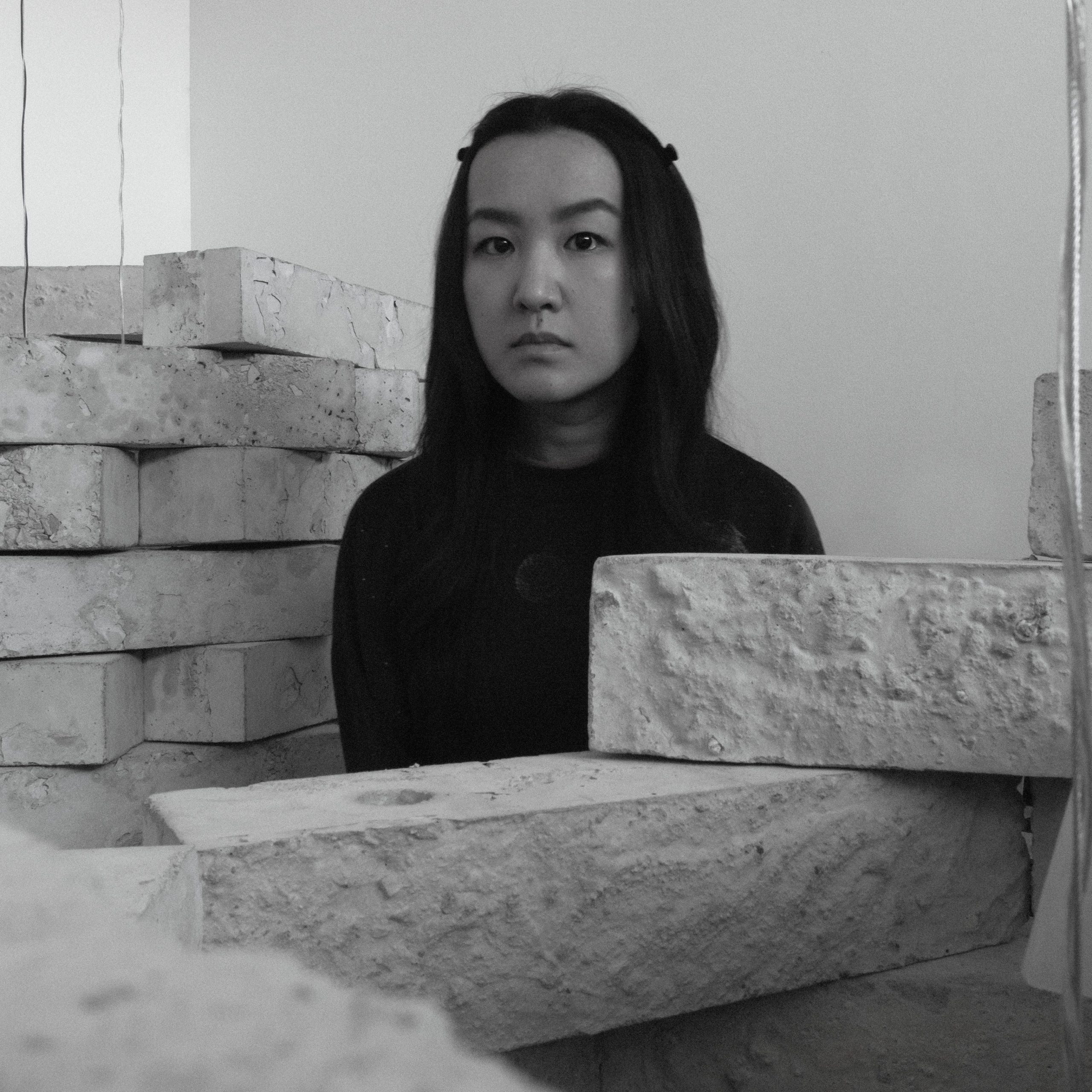
About the Author: Merry Sun is a sound artist and sculptor in Kansas City, Missouri. Sun was born in Shenyang, China, in 1996 and migrated to the States at the age of three. Much of her practice addresses her fractured past and oscillating patterns of migration. Sun constructs compositional infrastructures that utilize feedback to facilitate audience exploration and experimentation. Wielding the porosity of sound, her work searches for the coincidence and dissolves the boundary between space and place. In 2019, Sun received her BFA from Washington University in St. Louis with a double major in sculpture and philosophy. She received her MFA in Sound Art from Columbia University in New York City in 2023. Sun is a 2025 Charlotte Street Visual Artist Award Fellow, a current resident artist at Charlotte Street Foundation, and a co-founder of 100,000,000, an experimental art space in Kansas City, MO.
